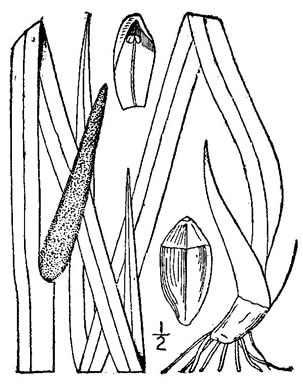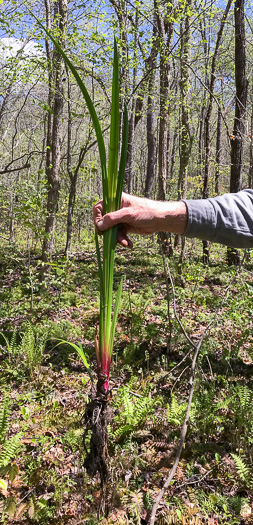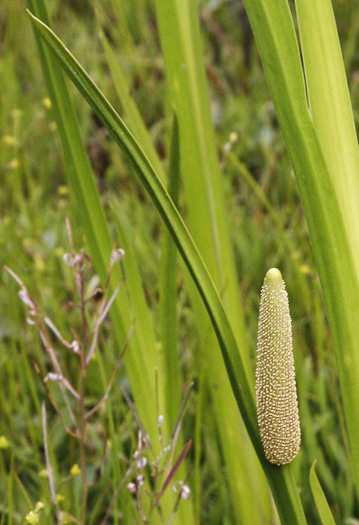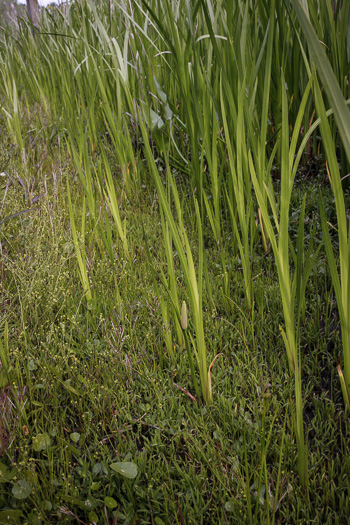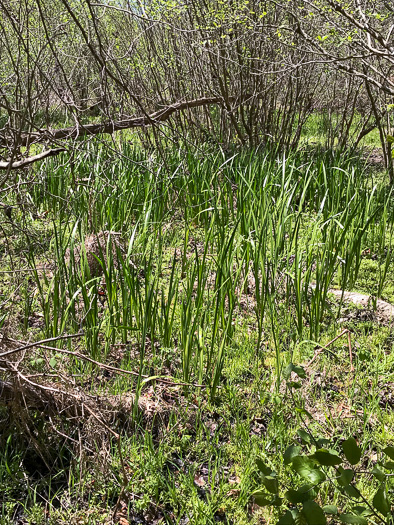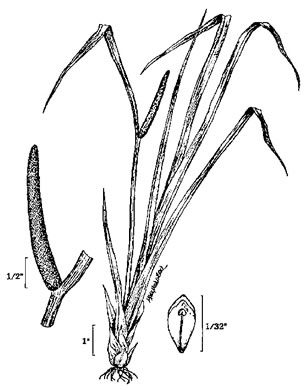Hovering over an image will enlarge it and point out features (works better on desktop than on mobile).
![]() A camera indicates there are pictures.
A camera indicates there are pictures.
![]() A speaker indicates that a botanical name is pronounced.
A speaker indicates that a botanical name is pronounced.
![]() A plus sign after a Latin name indicates that the species is further divided into varieties or subspecies.
A plus sign after a Latin name indicates that the species is further divided into varieties or subspecies.
Most habitat and range descriptions were obtained from Weakley's Flora.
Your search found 2 taxa in the family Acoraceae, Calamus family, as understood by PLANTS National Database.

![]()
![]() Common Name:
European Sweetflag, European Calamus
Common Name:
European Sweetflag, European Calamus
Weakley's Flora: (4/24/22) Acorus calamus FAMILY: Acoraceae
SYNONYMOUS WITH PLANTS National Database: Acorus calamus FAMILY: Acoraceae
INCLUDED WITHIN Vascular Flora of the Carolinas (Radford, Ahles, & Bell, 1968): Acorus calamus 032-01-001 FAMILY: Araceae
Habitat: Marshes, wet meadows, other wet areas
Uncommon in NC & in GA Mountains (rare elsewhere in GA & SC)
Non-native: Eurasia

![]() Common Name:
Sweetflag, American Calamus
Common Name:
Sweetflag, American Calamus
Weakley's Flora: (2/10/25) Acorus americanus ssp. americanus FAMILY: Acoraceae
SYNONYMOUS WITH PLANTS National Database: Acorus americanus FAMILY: Acoraceae
INCLUDED WITHIN Vascular Flora of the Carolinas (Radford, Ahles, & Bell, 1968): Acorus calamus 032-01-001? FAMILY: Araceae
Habitat: Marshes, wet meadows, other wet areas, limey seeps
Native
Your search found 2 taxa. You are on page PAGE 1 out of 1 pages.

